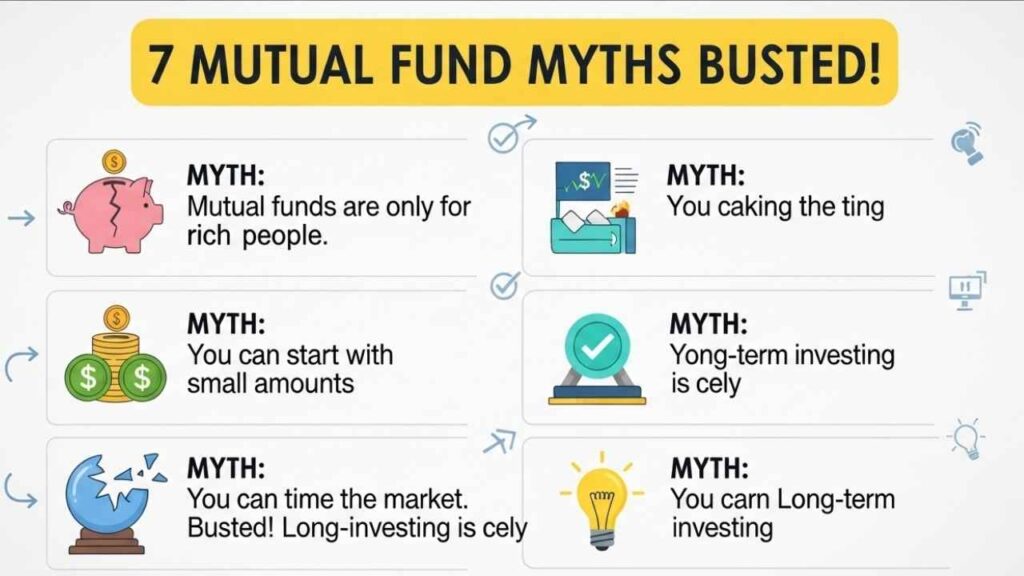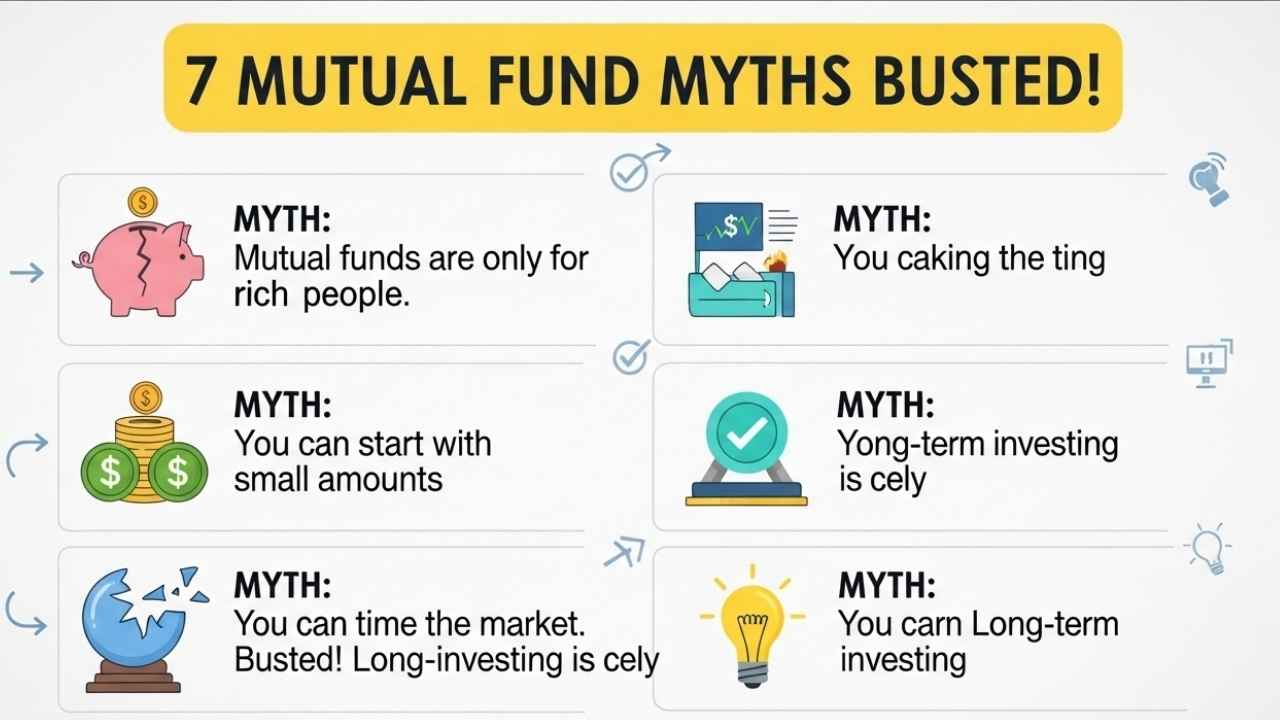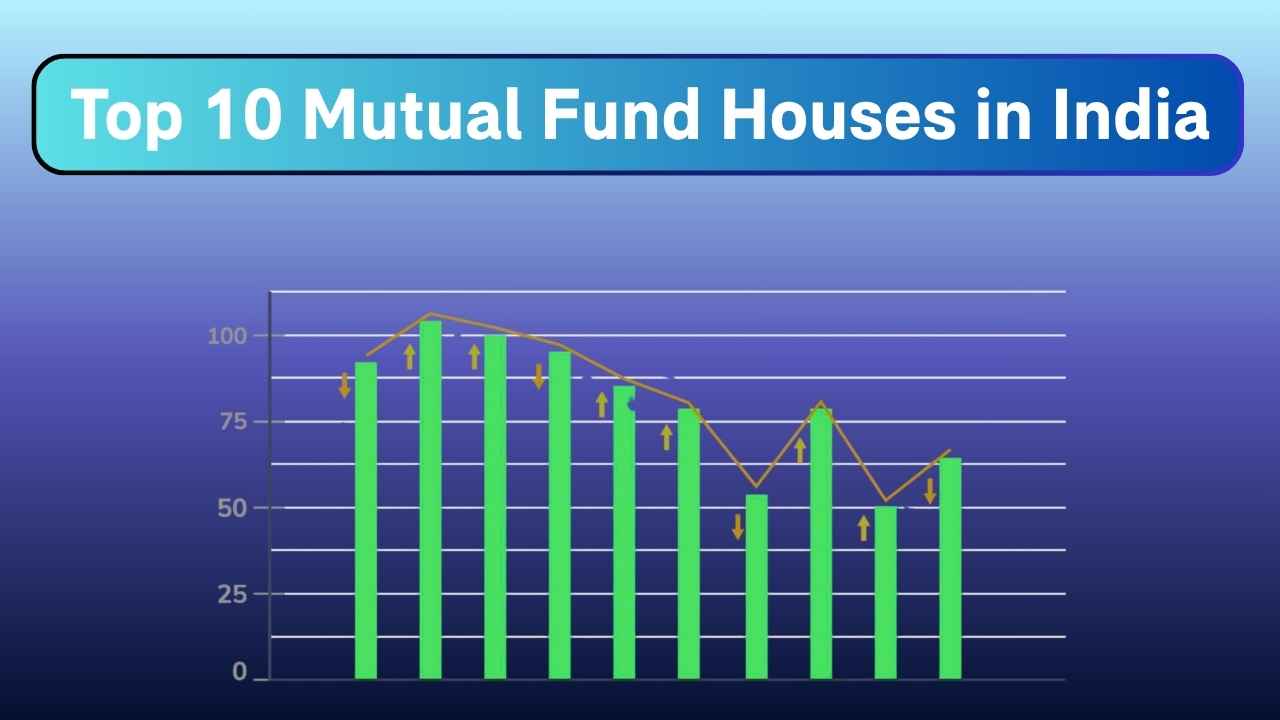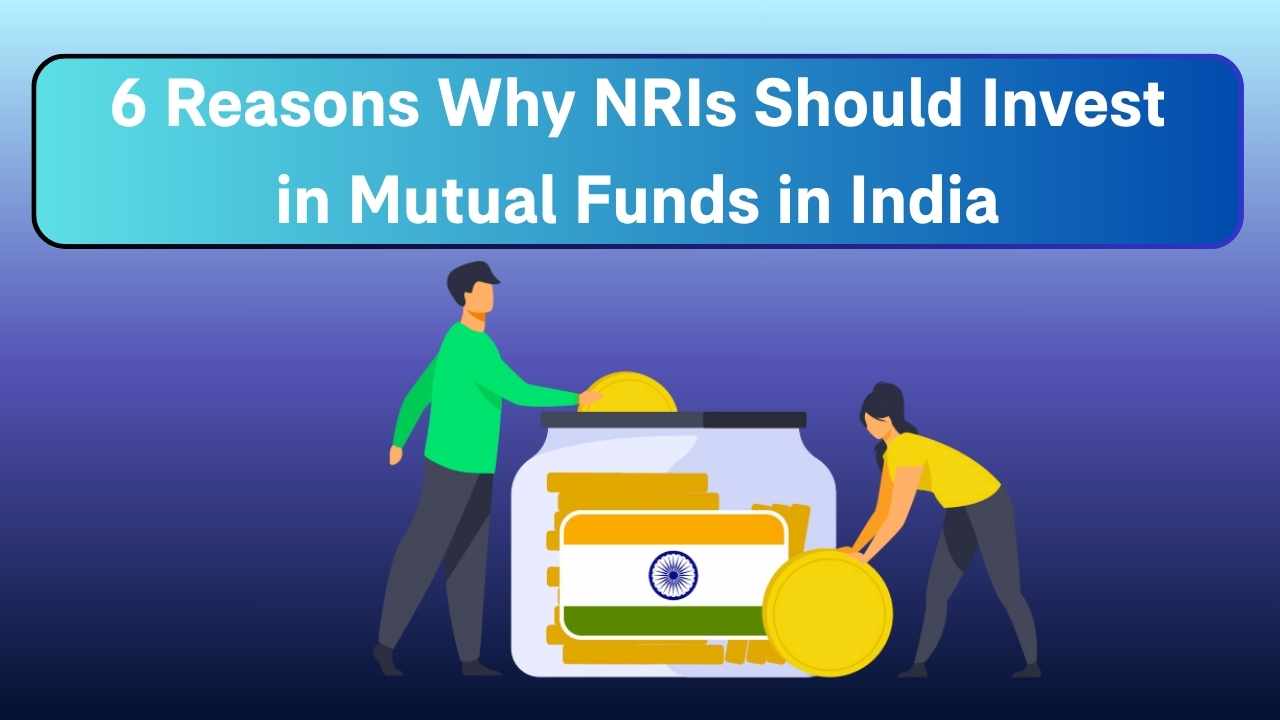Mutual funds are a great means to invest your money and see it grow, but so much misinformation is floating around. It keeps many from investing because of myths that prevent them from investing, thinking it’s fearsome or complicated. Having witnessed friends and relatives fall for these, I know how they can hinder you.
In this article, we’re going to blow 7 mutual fund myths wide open, relying on plain facts and examples drawn from 2025 Indian trends and global trends. Whether you’re a newbie or considering starting, these will help you invest wisely. Let’s set the record straight and get you all fired up about mutual funds!
Myth 1: It Takes a Lot of Capital to Begin Mutual Fund Investing
You must have heard that mutual funds are something that only the affluent can afford, right? Like you need lakhs of rupees just to begin with. But not anymore, people. In 2025, with digital platforms and accessibility, you can begin your investment journey with a mere ₹500 per month in the form of a Systematic Investment Plan (SIP). Think about it – SIPs let you invest small amounts regularly, like putting away pocket money, and over time, it adds up thanks to compounding. For example, if you start an SIP of ₹1,000 in an equity fund averaging 12% returns, in 10 years, you could have over ₹2 lakhs, even starting small.
No need for a big lump sum upfront. This legend dates back to the old times when investments were cumbersome, but today there are apps like Groww or Zerodha that make it easy for everyone. Consistency and not a large pocket are the magic words. So, young professional, student, don’t wait – begin small and become big. Mutual funds are egalitarian; they’re for all and not for the crème of society.
Myth 2: Expert Financial Knowledge is Required for Mutual Fund Investing
Another giant one is that you need to be some kind of finance guru to invest in mutual funds – like you need to balance-sheet-read or foretell market meltdowns. Nope, busted! Mutual funds are for the regular person. Professional fund managers do all the hard work – they study stocks, bonds, and markets, so you won’t have to. In 2025, with SEBI regulations in place, you can choose funds by going through basic categories such as equity for growth or debt for stability. It’s easy to comprehend risks and returns without a degree using fund fact sheets and online calculators.
For example, if you are a newcomer, begin with market-tracking index funds – no expert’s picks necessary. I have seen new investors succeed by simply setting objectives, such as buying a home, and selecting diversified funds. The actual expertise is waiting and not selling out during downturns. Websites even have robo-advisors providing personalized advice. So, disregard the fable; mutual funds democratize investing. Anyone with basic knowledge from free online resources can get started and grow their wealth over time.
Myth 3: Mutual Fund Investments Guarantee Returns
People often think mutual funds are like fixed deposits – put money in, get guaranteed profits out. But that’s a myth that needs busting hard! Mutual funds are market-linked, meaning returns depend on how the underlying assets perform, like stocks or bonds. There’s no sure-shot guarantee since markets fluctuate. During 2025, with global phenomena such as inflation or tech booms influencing markets, funds can provide high returns (10-15% for equities in the long term) but also incur short-term losses. The bust here is that though not assured, diversified funds minimize risks – e.g., hybrid funds blend stocks and bonds for balance. Historical information indicates equity mutual funds have beaten inflation, but past performance does not guarantee future.
Always read the fine print: “Mutual funds are subject to market risks.” Intelligent investors think long term, not instant wealth. If guarantees are what you desire, then hold on to FDs, but for growth, mutual funds give hope without guarantees. Learn the secrets of NAV fluctuations and take the ride. (Word count: 178)
Myth 4: Mutual Fund Investments Need a DEMAT Account
This myth catches many off guard: you need to have a DEMAT account, as you do for stocks, to invest in mutual funds. Boom! You don’t need one at all. Mutual funds may be purchased directly from the website or apps of the fund house, and units are held in statement form or electronically without a DEMAT. That’s all you need – KYC compliance – PAN, Aadhaar, and bank account. In 2025, with paperless operations, you can do it as easily as shopping online. For instance, if you are investing in an ETF (a mutual fund traded on exchanges), then sure, DEMAT is needed, but for the usual open-ended funds, don’t bother.
It also saves you money – no DEMAT maintenance charges. The myth most likely began due to the confusion of mutual funds with direct share dealing. Today, platforms take care of everything in the background. So, don’t worry about additional accounts. Just do KYC once, and you can invest in thousands of funds without any hassles.
Myth 5: Mutual Funds Invest Only in Equity Markets
Mutual funds are all about stocks – high risk, high return, nothing else, goes the common perception. Wrong! They have a broad range: equity for growth, debt for stable income, hybrid for equilibrium, and even gold or foreign funds. In 2025, with increasing interest in green investing, debt funds are sought after for low volatility, investing in bonds and government securities. For example, a debt mutual fund could provide 6-8% returns with low risk, suitable for conservatives.
The bust is diversification – money invests across assets to meet your risk tolerance. This myth overlooks the diversity, such as money market funds for short-term storage. By selecting the correct type, you can align your objectives, be it retirement or a rainy day fund. Don’t restrict yourself; investigate categories on AMFI websites. Mutual funds are a flexible tool, not an equity play.
Myth 6: Age is a Barrier to Beginning Mutual Fund Investments
You think you’re too young or too old? False! Starting early is a superpower with compounding – a 25-year-old saving ₹5,000 a month might have crores at 60 at 12% returns. Even if you’re 40 or 50, it’s not too late; balance shorter horizons with balanced funds. In 2025, with longer life expectancies, retirees fund income through debt. The bust: No cut-off age; children can invest through guardians, and retirees enjoy SWPs (systematic withdrawals).
The trick is matching to life stage – aggressive for early years, conservative for later. Myths such as this procrastinate, but evidence indicates steady investors will win irrespective of the starting age. Use Internet-based calculators to model scenarios. Age is no reason; begin now towards financial independence.
Myth 7: SIPs (Systematic Investment Plans) are Inflexible Once Started
Lastly, the notion that once you begin an SIP, you’re stuck forever – can’t change or stop. Busted big time! SIPs are highly flexible in 2025. You can change amounts upwards/downwards, stop for months, change date, switch funds, or cancel at will without charges (check exit loads). For instance, if your income increases, increase your SIP; if funds are low, stop it. Sites enable this online in minutes. The misconception is based on outdated, inflexible schemes, but now it is easy to use.
This adaptability makes SIPs perfect for rupee-cost averaging, purchasing more units when the price falls. Don’t be afraid to commit; SIPs respond to changes in life. They’re a clever, trouble-free means of growing wealth gradually.
Quick Summary Table: Myths vs. Facts
Here’s a handy table to recap the myths and how they’re busted. Use it as a quick reference!

| Myth Number | Myth Statement | Busted Fact |
|---|---|---|
| 1 | Needs lots of capital | Start with ₹500 via SIPs |
| 2 | Requires expert knowledge | Pros manage it for you |
| 3 | Guarantees returns | Market-linked, no promises |
| 4 | Needs DEMAT account | Just KYC is enough |
| 5 | Only equity investments | Includes debt, hybrid too |
| 6 | Age barrier exists | Start at any age |
| 7 | SIPs are inflexible | Change, pause, or cancel anytime |
Conclusion
There you have it – 7 mutual fund myths busted! These misconceptions often keep people from investing, but the truth is, mutual funds are accessible, flexible, and powerful for building wealth. In 2025, when technology makes everything convenient, there is no better time to begin. Keep in mind, do your homework, pair funds with your goals, and hold onto them long-term. Investing carries risks, so see a financial advisor if necessary. Bust these myths, and control your finances today!
FAQ: Mutual Fund Myths
Are mutual funds really safe for beginners?
Yes, start with low-risk options like debt funds. Diversification helps, but always understand the risks involved.
What’s the difference between SIP and lump sum?
SIP is regular small investments; lump sum is one big amount. SIP reduces timing risk through averaging.
How do I choose the right mutual fund?
Look at your goals, risk tolerance, past performance (not guaranteed), and expense ratios. Use tools like Morningstar ratings.
Can I lose all my money in mutual funds?
Unlikely in diversified funds, but equity ones can dip. No total loss like in stocks, thanks to professional management.
Are there taxes on mutual fund returns?
Yes, depending on type and holding period – LTCG for long-term, STCG for short. Check current tax rules for 2025.












